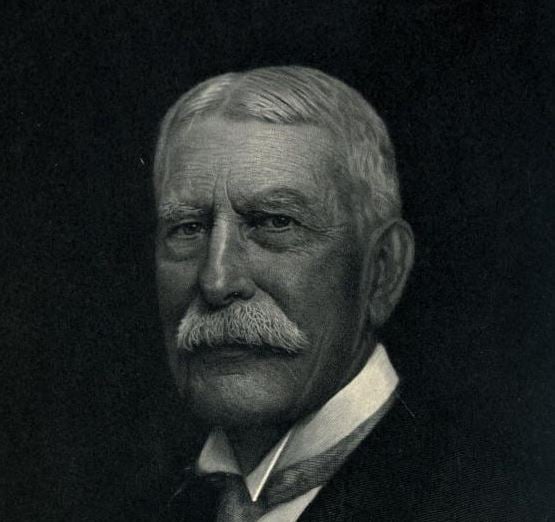What was Henry Flagler's net worth?
Henry Flagler was an American industrialist who had a net worth of $60 million at the time of his death in 1913. That is the same as around $1.6 billion in today's dollars.
Henry Morrison Flagler (1830-1913) was one of America's most influential Gilded Age industrialists, whose vision and ambition transformed Florida from a sparsely populated wilderness into a thriving tourist destination and agricultural center. As a co-founder of Standard Oil alongside John D. Rockefeller, he amassed considerable wealth in the petroleum industry, but his most lasting legacy lies in his revolutionary development of Florida's eastern coast. Through his Florida East Coast Railway and luxury hotel empire, Flagler essentially created modern Florida, developing cities like Palm Beach, Miami, and St. Augustine while establishing crucial infrastructure and transportation networks. His ambitious overseas railroad to Key West, dubbed "Flagler's Folly" by critics, stands as one of the most daring engineering achievements of the early 20th century. Flagler's combination of business acumen, bold vision, and willingness to take enormous financial risks made him a pivotal figure in American industrial and urban development.
Early Life and Business Beginnings
Born in Hopewell, New York, to a modest Presbyterian minister family, Flagler left school at 14 to seek his fortune. He moved to Ohio and began working in his half-brother's grain store, showing early signs of his business acumen. By his early twenties, he had established his own grain business and later ventured into salt manufacturing. Though the salt business failed during the Civil War, this setback provided valuable lessons that would inform his later success.
Standard Oil Years
Flagler's entry into the oil industry came through his partnership with John D. Rockefeller in 1867. He played a crucial role in building Standard Oil into the most powerful corporation of its time, developing innovative business strategies and negotiating favorable railroad rebates. His organizational skills and business strategies were instrumental in creating the company's monopoly over the American oil industry. While Rockefeller handled production, Flagler managed transportation logistics and legal matters, earning him the reputation as the brains behind Standard Oil's early success.
The Florida Vision
After his first wife's death in 1881, Flagler visited Florida for the sake of his second wife's health. Recognizing the state's potential as a tourist destination, he began his second career as Florida's premier developer. In 1885, he started construction of the Ponce de Leon Hotel in St. Augustine, an architectural masterpiece that set new standards for luxury accommodations. This marked the beginning of his systematic development of Florida's east coast.

(Public Domain, Wikimedia Creative Commons)
Railway Empire and Urban Development
Frustrated by poor transportation options, Flagler began purchasing and upgrading existing railroad lines, eventually creating the Florida East Coast Railway. He extended the railway southward, building new towns along the way and essentially opening up Florida's entire eastern coast to development. Each new rail extension was accompanied by infrastructure improvements, including water systems, electric power plants, and streets. Cities like West Palm Beach, Palm Beach, and Miami owe their existence to Flagler's development efforts.
The Key West Extension
Flagler's most ambitious project was the Key West Extension of his railway, known as the "Overseas Railroad." Started in 1905 when he was 75 years old, this 153-mile extension traversed open ocean via a series of bridges and viaducts, connecting the Florida Keys to the mainland. Completed in 1912, the project cost an estimated $50 million and was called "the eighth wonder of the world." Though later destroyed by a hurricane in 1935, the project demonstrated Flagler's extraordinary vision and determination.
Legacy and Impact
Henry Flagler's impact on Florida's development cannot be overstated. His investments in infrastructure, transportation, and tourism transformed Florida from America's poorest state into a major economic and tourist destination. Beyond his business achievements, he established schools, churches, and hospitals throughout Florida, many of which still bear his name. His development model of combining transportation infrastructure with luxury accommodations and planned communities became a template for future Florida development.
Today, Flagler's influence can still be seen throughout Florida. The Florida East Coast Railway continues to operate as a successful freight line, while many of his hotels have been converted into colleges and museums. His former mansion in Palm Beach, Whitehall, is now the Flagler Museum, preserving his legacy for future generations. Though sometimes criticized for his business practices and environmental impact, Flagler's role in creating modern Florida and his contributions to American industrial development secure his place as one of the most significant figures of the Gilded Age.
/2020/08/hf.jpg)
/2012/12/Donald-Soffer.jpg)
/2021/03/Andrew-Carnegie.jpg)
/2014/06/john-portman-1.jpg)
/2020/09/John-Pierpont-Morgan.jpg)
/2020/03/john-d-rockefeller-1.jpg)
/2009/09/Cristiano-Ronaldo.jpg)
/2009/09/Jennifer-Aniston.jpg)
/2009/09/Brad-Pitt.jpg)
:strip_exif()/2015/09/GettyImages-476575299.jpg)
/2020/01/lopez3.jpg)
/2019/10/denzel-washington-1.jpg)
/2019/04/rr.jpg)
/2018/03/GettyImages-821622848.jpg)
/2020/02/Angelina-Jolie.png)
:strip_exif()/2009/09/P-Diddy.jpg)
/2019/11/GettyImages-1094653148.jpg)
/2020/08/hf.jpg)
/2020/03/john-d-rockefeller-1.jpg)
/2014/09/John-D.-Rockefeller.jpg)
/2014/03/richest.jpg)
/2012/12/Donald-Soffer.jpg)
/2020/09/John-Pierpont-Morgan.jpg)
/2021/03/Andrew-Carnegie.jpg)
/2009/11/George-Clooney.jpg)
/2020/06/taylor.png)
/2020/04/Megan-Fox.jpg)
/2017/02/GettyImages-528215436.jpg)